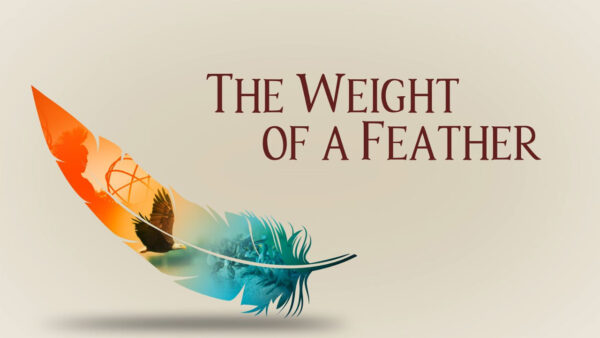American Experience “Custer’s Last Stand”
Jan. 17, 2012
New Two-Hour Documentary Explores the Life of
One of the Most Controversial and Mythic Figures in American History
America had just finished celebrating its 100th birthday, when, on July 6, 1876, the telegraph brought word that General George Armstrong Custer and 261 members of his Seventh Cavalry column had been massacred by Cheyenne and Lakota warriors along the Little Bighorn River in Montana Territory. The news was greeted with stunned disbelief. How could Custer, the “boy general” of the Civil War, America’s most celebrated Indian fighter, the avatar of western expansion, have been struck down by a group of warriors armed with little more than bows and arrows? Like everything else about Custer, his martyrdom was shrouded in controversy and contradictions, and the final act of his larger-than-life career was played out on a grand stage with a spellbound public engrossed in the drama. In the end, his death would launch one of the greatest myths in American history. American Experience “Custer’s Last Stand” airs Tuesday, January 17, 2012 at 7 p.m. on Eight, Arizona PBS.
Custer’s Last Stand, a new two-hour biography of one of the most celebrated and controversial icons of nineteenth-century America, paints a penetrating psychological portrait of Custer’s charismatic, narcissistic personality, and for the first time on television, explores the fateful relationships within the officers of the Seventh Cavalry that would lead him to his doom. This new biography allows viewers to take a fresh look at Custer’s passionate love affair with his wife Libbie, and their mutually ambitious partnership that made them the power couple of the 1870s. From Custer’s heroic exploits on the battlefields of the Civil War, to his often brutal subjugation of the Indians of the Southern Plains, to his highly publicized expedition into the Black Hills, Custer was a man in a hurry, desperately trying to “be” Custer, struggling to maintain the fame that had come to define him.
The son of an Ohio blacksmith, George Armstrong Custer was determined to transcend his lowly origins by earning a coveted spot at West Point. Always rebellious and a risk-taker, Custer graduated with a record of infractions never before equaled in the history of the academy. Fresh out of West Point when the Civil War began, Custer quickly proved more than ready for command, distinguishing himself in a series of dashing cavalry charges (including the decisive Battle of Gettysburg) that put him on the front page of Harper’s Weekly. He became known as the “boy general.”
At his side, often in a tent near the front lines, was the love of his life, Elizabeth Bacon Custer. They had met in the small town of Monroe, Michigan, and from the outset, shared a passion and ambition for greatness. Always more politically adept and diplomatic than her husband, Libbie provided the perfect complement to her often brash and overbearing spouse. Unlike many army wives at the time, Elizabeth was determined to accompany her husband to even the most remote and dangerous posts, and she was at his side when Custer joined the Seventh Cavalry, a new regiment being mustered out to the Southern Plains of Kansas and Oklahoma.
It was 1866 and the western frontier was awash in conflict. As railroads continued to push further west and new waves of settlers followed, clashes with Indians intensified. Unaccustomed to the tactics of the Cheyenne and Arapaho, Custer spent months fruitlessly chasing after elusive bands of warriors. At one point, he became so frustrated that he abandoned his command and dashed 150 miles in 55 hours just to spend one day with his wife. He was court-martialed, suspended from the service and denied pay for a year. Custer’s salvation would come from General Philip Sheridan, who recalled him and asked him to lead a daring new winter campaign against the Cheyenne. In a bloody dawn attack along the Washita River in 1868, Custer and his men killed 103 Indians — a few warriors, but mostly women, children and old men. Now dressed in buckskins, Custer was hailed as the nation’s finest Indian fighter. He had managed to resurrect his career from the depths of disgrace and reinvent himself as a new hero of the American frontier.
Custer’s heroics on the Southern Plains masked a complicated relationship with native people. As Nathaniel Philbrick, author of The Last Stand, says, “[Custer] identified with them very strongly, prided himself on knowledge of their rituals and lifestyle. But, on the other hand, he’s part of white civilization and saw them as a primitive race that was going to eventually melt into the shadows.”
Custer was again given a chance for glory in 1874, this time leading a survey expedition into the Black Hills. By the terms of the Fort Laramie Treaty, this striking oasis in the middle of the Northern Plains had been guaranteed to the Sioux forever and was considered by the tribe to be their most sacred ground. Sheridan hoped Custer’s provocative foray into the Black Hills would spark a new Indian war and push “hostile” bands, led by the defiant chief Sitting Bull, back onto the reservations. But there were no conflicts with Indians, and Custer turned the expedition into a stage for himself, scouting the trail, writing reports for the army and articles for newspapers back East, collecting specimens, and writing his Civil War memoirs. But in the summer of 1876, Custer’s journey into the Black Hills, what the Lakota had dubbed “The Thieves Road,” became a rallying cry as thousands of Indians left the reservations and joined Sitting Bull along the tributaries of the Upper Yellowstone River. Sheridan sent Custer, under General Alfred Terry, to subdue Sitting Bull and his people once and for all.
Riding with Custer on the expedition were his two senior officers, Major Marcus Reno, a brooding melancholic with a taste for whiskey, and Captain Frederick Benteen, a dyspeptic veteran of the Plains Wars who harbored a grudge against Custer for his actions at the Washita. The tortured relationship between these two men would prove decisive in the Battle of the Little Bighorn.
The battle, on June 25 – 26, 1876, would actually be three battles: Reno’s ill-fated charge into Sitting Bull’s village; his ragged retreat to the bluffs where he and Benteen would hold off thousands of Lakota and Cheyenne warriors for almost 36 hours; and Custer’s Last Stand, which would be forever cloaked in mystery — a chaotic and confused scene that to this day remains a subject of controversy and debate.
No sooner had the news of Custer’s massacre reached Philadelphia than the mythmaking began. It would be Libbie Custer who would do more than anyone to shape the legend of her husband. In a series of bestselling books, the faithful widow extolled Custer’s heroic virtues and dauntless courage, and she kept it up until she died in 1933. Future decades would ceaselessly re-interpret the meaning of the Custer myth, each generation seemingly adapting his story to suit the needs of their own time. For Americans during World War II, Custer served to rally a nation engaged in a fight for its survival against totalitarianism. In the Vietnam era, Custer would be seen as a symbol of American arrogance and violent imperialism.
The Participants, in order of appearance
- Nathaniel Philbrick is the author of The New York Times bestseller The Last Stand: Custer, Sitting Bull, and the Battle of the Little Bighorn.
- Richard Slotkin is a cultural critic and the Olin Professor of English and American Studies at Wesleyan University.
- Louis Warren is a professor of Western U.S. History at the University of California, Davis.
- Michael A. Elliott is a professor of English at Emory University and the author of Custerology: The Enduring Legacy of the Indian Wars and George Armstrong Custer.
- Edward Linenthal is a professor of history at Indiana University.
- Gerard Baker is the former superintendent, Little Bighorn Battlefield National Monument.
- Paul A. Hutton is a professor of history at the University of New Mexico and the editor of The Custer Reader.
- Louise Barnett is a professor of American Studies at Rutgers University and the author of Touched by Fire: The Life, Death, and Afterlife of George Armstrong Custer.
- Shirley Leckie Reed is a professor of history at the University of Central Florida and the author of Elizabeth Bacon Custer and the Making of a Myth.
- Philip J. Deloria is a professor of history at the University of Michigan.
)



















